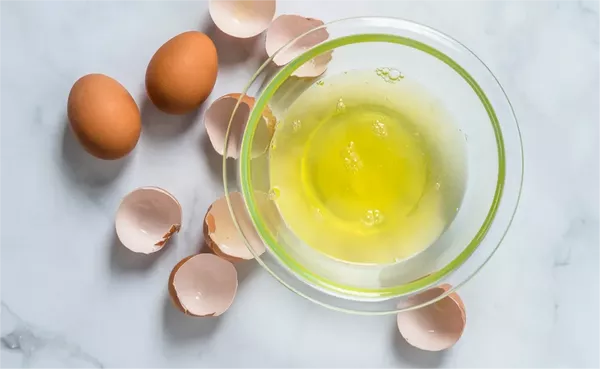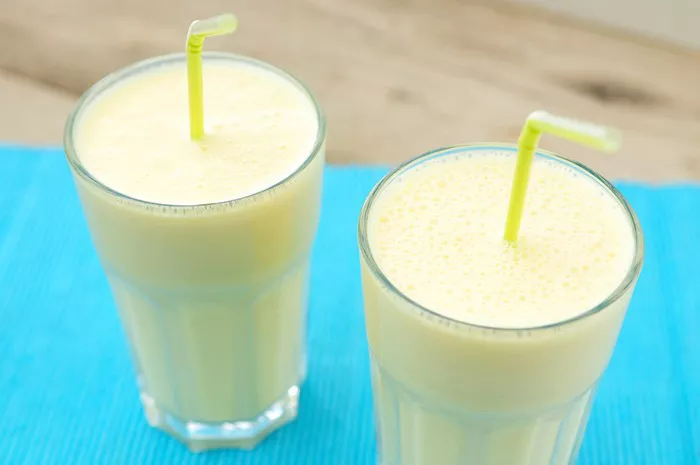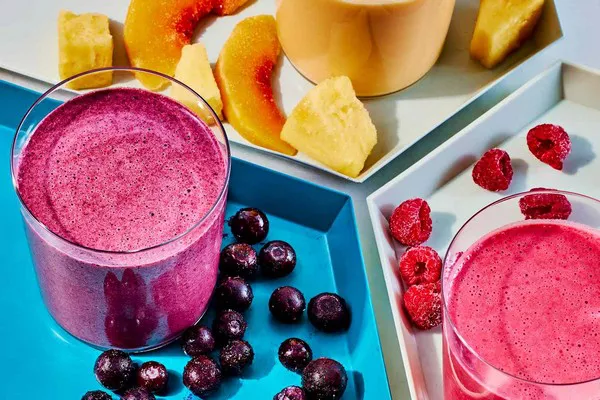Desserts are a delightful culmination to any meal, serving as a sweet indulgence that can range from simple and quick to elaborate and gourmet. The ingredients used in desserts vary widely depending on the type of dessert, regional influences, dietary restrictions, and personal preferences. Understanding the core components that make up desserts can enhance both your culinary skills and your appreciation of these delectable treats. This article will explore the essential ingredients of desserts, their roles, and how they interact to create the final product.
Basic Ingredients of Desserts
1. Sugar
Sugar is arguably the most critical ingredient in desserts. It provides sweetness, enhances flavor, and affects texture and color. Different types of sugar, such as granulated, powdered, brown, and raw sugar, have unique properties and uses.
- Granulated Sugar: Commonly used in baking and candy-making. It dissolves easily and is a standard ingredient in cakes, cookies, and pastries.
- Powdered Sugar: Also known as confectioners’ sugar, it is finely ground and often used for icings, frostings, and dusting.
- Brown Sugar: Contains molasses, giving it a moist texture and rich flavor. It is excellent for cookies, cakes, and sauces.
- Raw Sugar: Less processed and retains some natural molasses. It is often used for its distinctive flavor in specialty baking.
2. Flour
Flour provides structure and bulk to baked goods. The type of flour used can significantly impact the texture and flavor of the final product.
- All-Purpose Flour: Versatile and commonly used in a variety of desserts.
- Cake Flour: Has a lower protein content, resulting in a tender crumb ideal for cakes and delicate pastries.
- Pastry Flour: Falls between all-purpose and cake flour in terms of protein content, making it suitable for pie crusts and pastries.
- Whole Wheat Flour: Adds a nutty flavor and dense texture, often used in healthier dessert options.
3. Fats
Fats add richness, moisture, and flavor to desserts. They also contribute to the texture and can affect the shelf life of baked goods.
- Butter: The most common fat in desserts, valued for its flavor and ability to create a tender crumb.
- Shortening: Used for its ability to produce a flaky texture in pie crusts and pastries.
- Oil: Adds moisture and can make desserts denser and more tender.
- Cream and Cream Cheese: Provide richness and a smooth texture, commonly used in frostings, cheesecakes, and creamy desserts.
4. Eggs
Eggs serve multiple functions in desserts, including binding ingredients, adding moisture, contributing to leavening, and enriching flavor and color.
- Whole Eggs: Used in most baked goods for their balance of proteins and fats.
- Egg Whites: Contribute to leavening and structure, used in meringues and angel food cakes.
- Egg Yolks: Add richness, color, and moisture, often used in custards and rich cakes.
5. Dairy Products
Dairy products add moisture, richness, and flavor to desserts.
- Milk: A common liquid in baking that adds moisture and helps dissolve dry ingredients.
- Buttermilk: Adds tanginess and reacts with baking soda to provide leavening.
- Cream: Used for making whipped cream, ganache, and creamy desserts.
- Yogurt: Adds moisture and tang, often used in healthier dessert recipes.
6. Leavening Agents
Leavening agents are crucial for making baked goods rise and become light and airy.
- Baking Powder: A chemical leavening agent that releases carbon dioxide when moistened and heated.
- Baking Soda: Requires an acid (like buttermilk or vinegar) to activate and produce carbon dioxide.
- Yeast: A biological leavening agent used in bread and some cakes, which ferments and produces gas over time.
- Steam and Air: Created through techniques like beating eggs or butter and sugar, these can also act as leavening agents in some recipes.
7. Flavorings and Spices
Flavorings and spices enhance the taste of desserts and can create a signature profile for different recipes.
- Vanilla: The most common flavoring, used in almost every dessert.
- Cinnamon, Nutmeg, Cloves: Common spices that add warmth and depth, especially in autumnal and holiday desserts.
- Citrus Zest: Adds a bright, fresh flavor to baked goods and desserts.
- Chocolate: Used in various forms (cocoa powder, chocolate chips, bars) to add richness and flavor.
Specialty Ingredients
1. Nuts and Seeds
Nuts and seeds add texture, flavor, and nutritional value to desserts. They can be used whole, chopped, or ground into flours.
- Almonds, Walnuts, Pecans: Popular choices for adding crunch and flavor.
- Seeds: Such as chia, sesame, and pumpkin seeds, used for texture and added health benefits.
SEE ALSO: What Can I Make with Brownie Mix and Cream Cheese?
2. Fruits
Fruits provide natural sweetness, moisture, and flavor. They can be used fresh, dried, or as purees.
- Berries: Strawberries, blueberries, and raspberries are popular in tarts, cakes, and sauces.
- Citrus Fruits: Lemons, oranges, and limes add bright flavors and acidity.
- Dried Fruits: Raisins, apricots, and dates add sweetness and texture.
3. Gelatin and Pectin
These ingredients are used to set and thicken desserts.
- Gelatin: Used in making jellies, mousses, and marshmallows.
- Pectin: A natural thickener used in jams and jellies.
4. Alcohol
Alcohol can enhance flavor and act as a preservative in desserts.
- Liqueurs: Such as Grand Marnier or Amaretto, used for flavoring.
- Spirits: Like rum or brandy, often used in fruitcakes and flambéed desserts.
Common Dessert Types and Their Ingredients
1. Cakes
Cakes are made from a combination of flour, sugar, fat, eggs, and leavening agents. Additional ingredients like milk, flavorings, and fruits can be added to create various types of cakes.
- Sponge Cakes: Use beaten eggs to incorporate air and create a light texture.
- Butter Cakes: Use butter for richness and a tender crumb.
- Pound Cakes: Traditionally made with equal parts of flour, butter, sugar, and eggs.
2. Cookies
Cookies typically include flour, sugar, fat, and eggs. Additional ingredients like chocolate chips, nuts, and spices can be added for variety.
- Drop Cookies: Like chocolate chip cookies, made by dropping spoonfuls of dough onto a baking sheet.
- Rolled Cookies: Like sugar cookies, where dough is rolled out and cut into shapes.
- Bar Cookies: Like brownies, where dough is spread in a pan and cut into bars after baking.
3. Pastries
Pastries rely heavily on flour and fat, with minimal liquid to create a flaky texture.
- Pie Crusts: Made with flour, fat (butter or shortening), and a small amount of water.
- Puff Pastry: Uses layers of dough and fat to create a light, flaky texture.
- Choux Pastry: Made with flour, butter, water, and eggs, used for éclairs and cream puffs.
4. Custards and Puddings
Custards and puddings use dairy, eggs, and sugar to create a creamy, smooth texture.
- Baked Custards: Like crème brûlée, where the mixture is baked in a water bath.
- Stovetop Custards: Like pastry cream, cooked on the stovetop until thickened.
- Puddings: Thickened with starch, such as cornstarch or rice.
5. Frozen Desserts
Frozen desserts like ice cream and sorbet use dairy, sugar, and flavorings, with ice cream including eggs and sorbet relying on fruit purees.
- Ice Cream: Made with cream, sugar, and eggs, churned to incorporate air.
- Sorbet: Made with fruit puree and sugar, without dairy.
- Gelato: Similar to ice cream but with less fat and a denser texture.
Conclusion
Desserts are a celebration of flavors, textures, and creativity. The ingredients used in desserts not only contribute to their sweetness but also define their structure, texture, and overall appeal. From basic ingredients like sugar and flour to specialty items like gelatin and liqueurs, each component plays a crucial role in creating the final product. Understanding the function of these ingredients can help you become a more skilled and inventive baker, capable of creating desserts that are both delicious and visually stunning. Whether you are a novice or an experienced baker, experimenting with different ingredients and techniques can open up a world of sweet possibilities.
Related Topics:



























